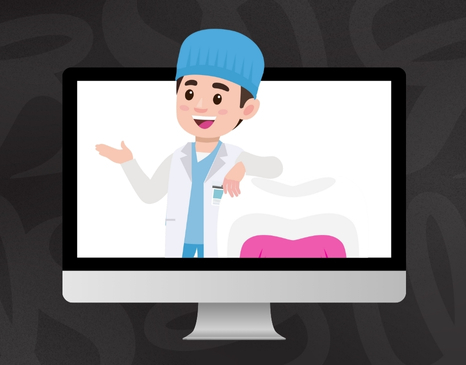It was not that long ago when the act of connecting with someone over a video call was something you’d only see in Star Trek. But, as technology grew more connected than ever before, science fiction became science fact and making a video call became so simple, a toddler could do it.
Enter telemedicine. Telemedicine is not a new concept; medical professionals worldwide have been using telehealth to connect with patients since the 1920’s.
But, what does this look like for a dental practice? What do you need to make sure your teledentistry services are not only convenient for your patients but also helpful? Finally, what do you need to do to make sure all of your patient information is secure while online?
At SmileShop Marketing, it’s our mission to help you reach as many patients you possibly can. So today, we’re going to take a look at teledentistry and the advantages it can provide your practice in an ever-evolving stay-at-home world! Let’s dive in!
What Does Teledentistry Look Like?
The whole point of telemedicine is to connect with your patient regardless of their location.
Some patients may find it challenging to book in-person appointments, but they still need the advice of a dentist to make sure their oral health is properly maintained. By using teledentistry, you can provide the information your patients need without them stepping into your chair.
There are 2 forms teledentistry can take:
Real-Time Consultation
Real-time consultations are simple video calls with your patient where they will be able to explain the issues they may be having. Both you and the patient will need a high-broadband internet connection through network, satellite, and a webcam.
Unfortunately, teledentistry appointments aren’t a replacement for in-person appointments, but connecting with your patient can help you understand what the problem is and what steps to take next.
Store & Forward
Store and forward is a type of teledentistry where you will be sent the dental health information you need instead of having a video call appointment. This information can include clinical information, photos, videos, or radiographs.
This option may be chosen if your patient does not have the time to schedule a video consultation, but has the information you need to give them the best possible care.

What Tools Can be Used to Utilize Teledentistry?
The great thing about modern technology is that practically every device has a camera attached to it! Depending on preference, you can conduct telemedicine appointments on your computer, phone, or even tablet.
But, for the sake of convenience of both you and your patient, you will need to make sure that the software and hardware you use is up-to-date. This includes a reliable internet connection, hard drive memory, great RAM, and a quality processing unit.
However, patient privacy is paramount in performing teledentistry appointments. You need to make sure any technology you choose to use is compliant with your region’s medical privacy policy.
How Do You Protect Your Patient’s Information?
Patient information needs to be protected in the same way as a regular appointment. Because of this, there are some technologies you need to use to ensure your patient’s information is protected.
In the US, all medical professionals are held to HIPAA regulations to ensure that patient information is safe and secure. Because of this, you may not be able to use apps like Skype or Facetime to host your appointments.
Canada has a similar law under PIPEDA, which protects personal information in all private-sector organizations, including dentistry.
Thankfully, there is a host of different HIPAA and PIPEDA compliant apps you could use to utilize teledentistry. Some of them include:
Connect To A Larger Patient-Base Today!
Are you looking to fill more seats, grow your revenue, and make a lasting impression on the worldwide web? Consider talking to our team at SmileShop Marketing today and we can help find meaningful solutions to grow your practice!






